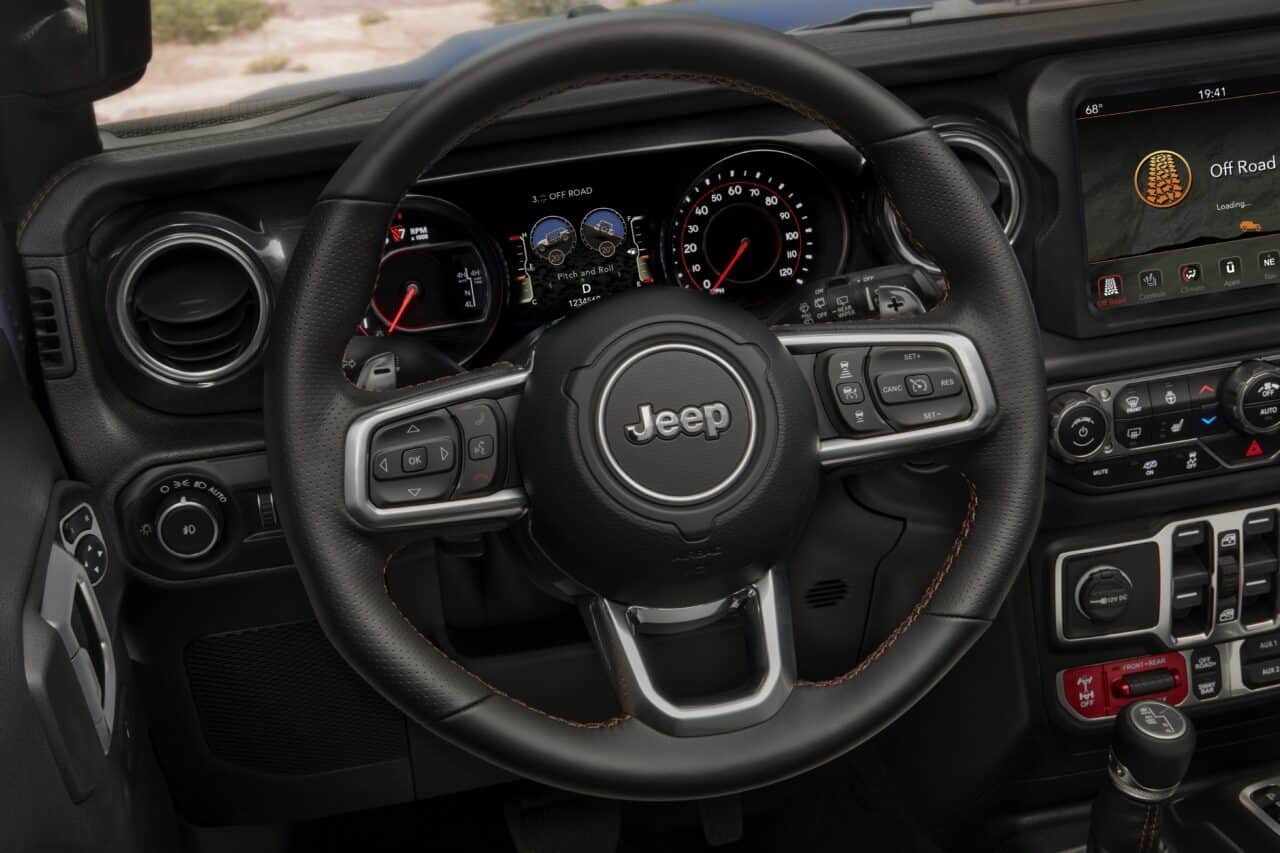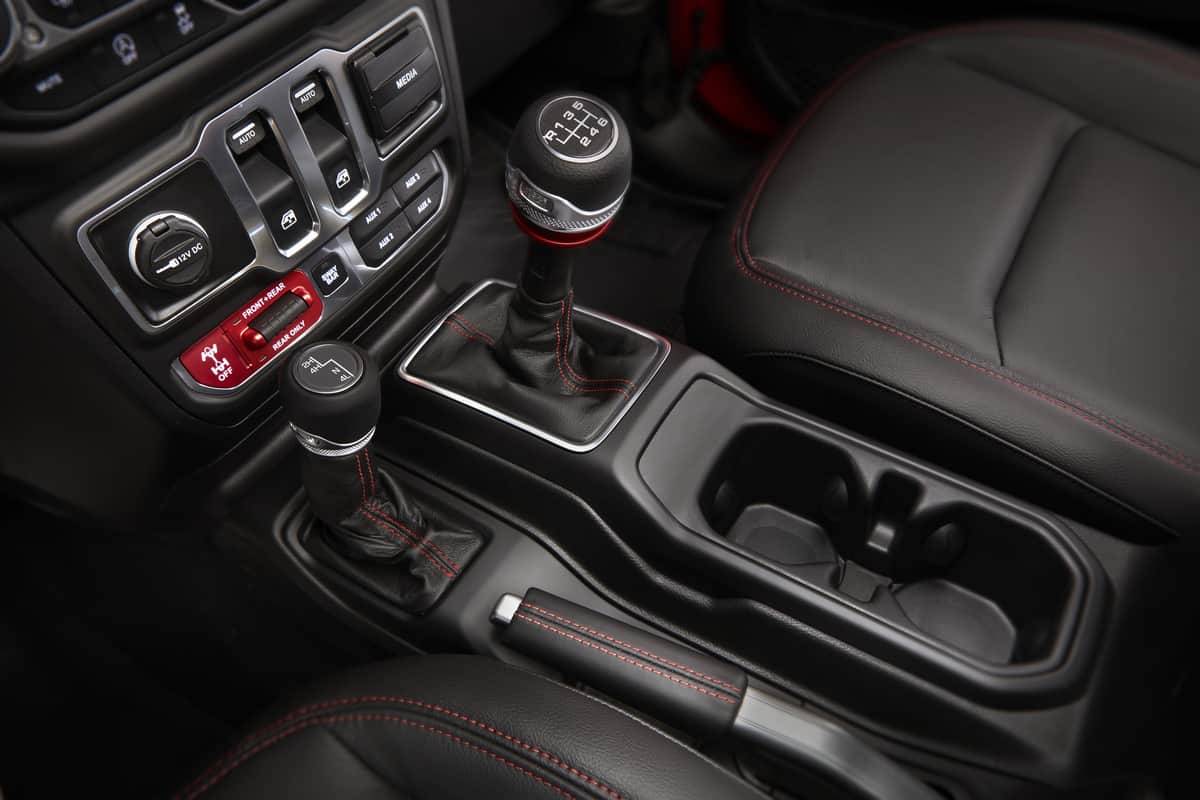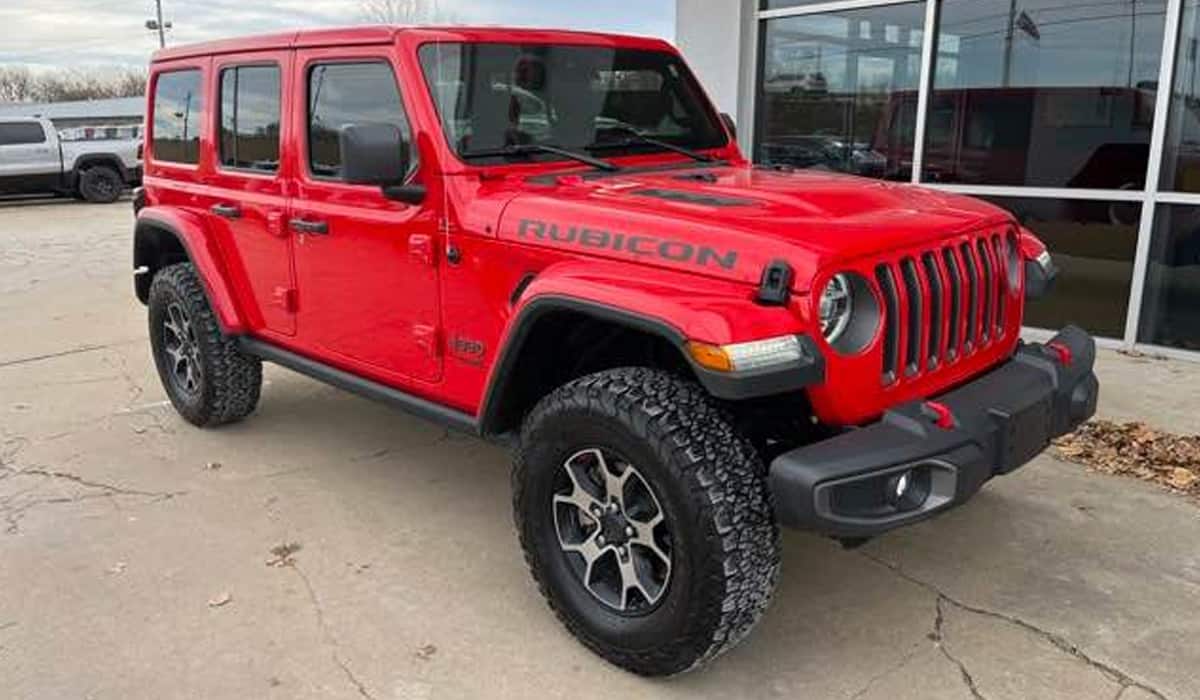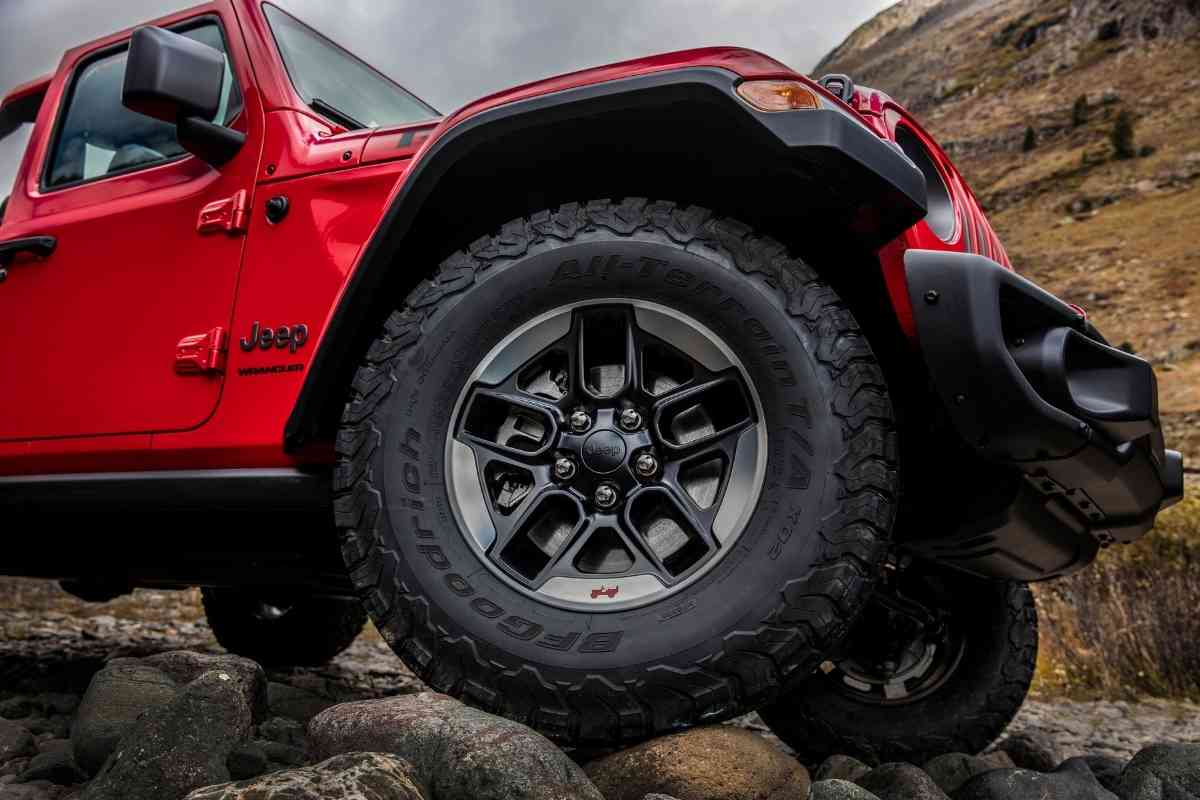Pros and Cons of Automatic vs Manual Jeep Wrangler: JL and JLU Model Comparison
When buying a Jeep Wrangler, the choice between an automatic transmission and a manual transmission can be a pivotal one. My experience with driving both types of transmissions in the Wrangler models, particularly the JL and JLU, has shown that each offers its own unique driving feel and set of benefits.

Automatic transmissions provide ease of use and generally better fuel economy, as demonstrated by Jeep Wrangler fuel economy comparisons. Meanwhile, manual transmissions offer more direct vehicle control and a classic driving experience that many enthusiasts, like myself, deeply appreciate.
Understanding the differences in transmission mechanics is essential for any potential Jeep buyer. Automatics have progressed to the point where they often have more gears and shift more quickly than manuals, contributing to their ability to keep the engine running efficiently—a fact not lost on someone who’s driven both modern automatic and manual Jeep Wranglers.
On the other hand, the hands-on interaction with a manual gearbox is something that can enhance the driving experience, and it’s something I’ve always enjoyed when taking my stick-shift Jeeps out for a spin.
Key Takeaways
- Automatics offer ease of use and efficiency; manuals provide a classic driving experience.
- Jeep Wrangler options cater to different preferences with a range of trim and transmission choices.
- Practical considerations such as cost, maintenance, and customization influence the decision.
Transmission Mechanics
Manual Transmission System

The manual transmission in my Jeep Wranglers involves more hands-on engagement during driving. It’s a stick shift system, which means that I use a lever to manually select the appropriate gear ratios. This setup requires a clutch pedal, which I press to disengage the gears when shifting.
My experience has shown me that a well-managed manual transmission can contribute to an exhilarating driving experience, especially when I’m navigating tough terrain.
Automatic Transmission System
In contrast, automatic Jeeps use an automatic transmission system that optimizes the gear ratio without input from me. Recent models, like the JL and JLU, typically come with an 8-speed automatic transmission, providing smooth gear transitions and improved fuel economy.
I appreciate the convenience of automatics in heavy traffic because it eliminates the constant clutch and gear-shifting chore from my daily commute.
Performance and Control
When deciding between a manual or automatic Jeep Wrangler, whether it’s the newer JL or JLU models (or older YJ, TJ, or JK Models), performance and control are at the forefront of most enthusiasts’ minds.
I’ve found that the transmission you choose can significantly impact your driving experience, whether you’re on rugged trails or navigating city streets.
Off-Roading Capabilities
For purists like me who love the feeling of being one with the machine, the manual transmission in a Wrangler often provides that direct connection to the power and performance of the vehicle.
In older Wranglers, I’ve noticed my manual Wrangler feels more engaged when tackling obstacles, allowing me to control the power and acceleration with precision. In the JL and especially the JLU I do not seem to get this same satisfaction. I much prefer the automatic in the JL / JLU.
This may be coming from 30 years of Jeep ownership with manual and hydraulic gear shifts in the YJ and LJ (TJ Unlimited) compared to the modern JL. Or maybe I am just getting old and tired of changing gears when driving on a daily basis.
Either way, I prefer the automatic in the JL. There is something that I would best describe as “numb” or “emotionless” about the manual in the JL. There isn’t the same driver feedback you get from older Jeeps.
City Driving
When it comes to city driving, an automatic transmission Wrangler can be a godsend. Those of us who own Jeeps know that stop-and-go traffic can be tedious with a manual.
The convenience of an automatic’s seamless shifting makes the daily commute less of a chore, and the latest automatic Wranglers are impressively efficient, holding their own against the stick shifts in terms of performance.
Fuel Efficiency
Despite popular belief, modern automatic transmissions can be quite fuel-efficient. The automatic Jeep Wrangler outperforms my manuals on long highway stretches thanks to advanced gear ratios and smarter shift points that keep the engine operating in the most efficient zone.
However, some driving scenarios might still give the edge to manual transmission Wranglers, depending on driving habits and conditions.
Maintenance and Reliability
In my time driving and maintaining Jeeps, I’ve noticed distinct differences in the maintenance and reliability between automatic and manual transmissions of the Wrangler models.
Considering these factors is essential, as they can significantly impact your overall ownership experience.
Long-Term Maintenance
When it comes to long-term maintenance, manual Jeep Wranglers have often been seen as more straightforward. Since they have fewer moving parts, there’s simply less that can go wrong.
For instance, clutch replacements are usually the most significant concern, but with proper driving habits, they can last a very long time.
Meanwhile, automatic transmissions may require more complicated service over time, as they can suffer from shifting problems like delayed gear changes or gear slipping.
- Manual Maintenance Tips:
- Regularly check transmission fluid levels.
- Avoid riding the clutch to prevent early wear.
- Automatic Maintenance Tips:
- Schedule transmission fluid changes as recommended.
- Be attentive to changes in shifting behavior.
Reliability by Transmission Type
When discussing reliability by transmission type, my experience with owning five Jeeps has shown me examples of both highly reliable and those needing a bit more TLC.
Automatic Wranglers are generally known for their durability and can be exceptionally reliable when maintained correctly. However, they can encounter issues with their complex gearboxes.
In contrast, the reliability of manuals often relates to the driver’s skill level, as improper use can quickly lead to unnecessary damage.
- Automatic Pros:
- Less driver input can mean less operational wear.
- Manual Pros:
- Direct control can potentially extend transmission life if driven correctly.
Cost and Resale Value
When considering a Jeep Wrangler, I always take a close look at both the immediate price tag and the long-term financial implications. In my experience, understanding the balance between initial costs and future resale value is crucial for making a savvy purchase.
Learn More: Resale value of Automatic vs Manual Wranglers

Upfront and Ownership Costs
For me, the thrill of buying a new vehicle comes with a close analysis of the sticker price. I’ve noticed that a Jeep Wrangler with a manual transmission tends to be less expensive in upfront costs when compared to their automatic counterparts.
Not to forget, from a maintenance standpoint, manual Wranglers are often more budget-friendly; fewer complex parts generally lead to lower repair costs.
However, it’s important to factor in that automatic transmissions might offer better fuel efficiency, which can translate into cost savings over time.
Resale Prospects
Historically, the Wrangler is known to hold its value extremely well. This may start to decline a bit with the current car market Jeep as a whole has a lot of excess inventory hitting the market.

This being said, anytime you get ready to buy a vehicle you need to consider resale value. While the demand for used stick-shift Jeeps has a niche appeal, it’s evident that automatic models tend to hold their resale value better, thanks to their wider audience.
Keeping a well-maintained Jeep, be it manual or automatic, is key to preserving its resale value — and I’ve ensured mine are all in tip-top shape for when it’s time to hand them over to the next enthusiast.
Practical Considerations
When choosing the transmission for your Jeep Wrangler, it’s not just about the mechanics; it’s how it fits into your lifestyle. From commuting to work to hitting the trails, your choice could shape your overall driving experience.
Daily Driver Suitability
I find that for those who prioritize convenience and comfort in daily driving, an automatic Jeep Wrangler can be a game-changer. Navigating through rush-hour traffic becomes less of a chore without the constant need to work the clutch. You get to enjoy the sporty feel of a Wrangler with the ease of automatic shifting.
Off-Roading Experience
When off-roading, it’s a different story. My manual Wranglers provide me with precise control over power and torque—crucial on variable trail conditions. Plus, the engagement and challenge of manually navigating through obstacles add to the fun aspect of the off-road experience.
This being said, there are a lot of advantages to an automatic offroad as well. One of those being the ability to make slow, smooth and controlled movements. You don’t have to feather the clutch when going over obstacles or make sure to stay in one gear during water crossings.
Traffic Handling
In heavy traffic, there’s no beating the ease of an automatic transmission. It’s a relief not having to constantly engage and disengage the clutch, especially during long periods of stop-and-go. My automatic Wranglers allow me to focus more on the traffic around me rather than on shifting, offering a stress-free ride home after a day on the trails.
Technological and Safety Features

When deciding between the manual and automatic Jeep Wranglers, technology and safety features are substantial deciding factors. In my years on the road and in the shop, I’ve come to appreciate how these aspects can enhance not just the driving experience but also provide peace of mind.
Advanced Transmission Technologies
In recent models of automatic Jeep Wranglers, the eight-speed automatic transmission has introduced a level of technological sophistication that’s hard to ignore. It’s not just about smooth shifting; it also includes electronics that help prevent overheating—a common enemy of transmission longevity.
My automatic Grand Wagoneers have benefited greatly from these advancements, ensuring a smooth ride even on the most challenging trails.
For the purists who prefer manual transmission, the six-speed offers a control and connection to the vehicle that technology can’t replicate. Even so, modern manual Wranglers incorporate technology to streamline operation, like hill-start assist that prevents rollback.
Such features make my stick-shift Wranglers a joy to drive, especially when I’m navigating steep terrain.
Safety and Driver Assistance
Today’s Jeeps also boast a variety of safety and driver assistance features, critical for both automatic and manual transmission vehicles.
In automatic models, enhanced stability and traction control systems can quickly adjust to changing conditions, ensuring a safer drive. Moreover, the implementation of push start technology has not only added convenience but also a layer of security.
On the other hand, while driving one of my manual Wranglers, I rely heavily on the precision and direct control that the manual transmission brings to safety. The feedback it provides can be key in maneuvering away from potential hazards.
Both transmission types are supported by a comprehensive airbag system and sturdy frame construction, which speak volumes about Jeep’s commitment to safety.
Jeep Wrangler Trim and Engine Options
When choosing my Jeep Wranglers, I’ve always paid close attention to the trims and engine options available. They can significantly affect the vehicle’s performance and suitability for on- or off-road adventures. Let me share the specifics.
JL and JLU Trims
The Jeep Wrangler, particularly the JL and JLU models, come in a variety of trims that cater to different preferences and uses. The two-door version, known as the JL, and the four-door, the JLU, share several trim levels:
- Sport S: As my base go-to, it delivers both durability and comfort without overdoing it on features.
- Sahara: Only available for the JLU, Sahara combines my love for style with off-road capability; it’s an urban warrior that isn’t a stranger to dirt.
- Rubicon: I consider this the peak of off-roading prowess with features like heavy-duty axles and lockable differentials.
- Willys: It’s a shoutout to the Wrangler’s military heritage with a limited-slip rear differential and aggressive looks.
- Freedom: This trim is a patriotic nod with military-style stars and a portion of sales going to charity.
- Islander: It throws in a tropical twist, giving the Wrangler a beach-ready vibe perfect for those seaside excursions.
Certain features are only found on specific trims, and Jeep enthusiasts like myself always look for that ideal mix of functionality and personality that fits our lifestyle.
Powertrain Variants
Under the hood, Jeep Wrangler offers a few choices allowing customization to one’s driving preference and requirements.
The centerpiece of the Wrangler’s powertrain variants is the 3.6L V6 Pentastar engine, which I trust for its blend of power and reliability. It’s available across most trims, and it’s proven its worth on countless adventures I’ve taken.
Additionally, the Wrangler offers different engines like the turbocharged four-cylinder option, which balances performance with fuel efficiency.
Over the years, I’ve learned that engine choice can influence every aspect of the Wrangler experience, from how it handles my favorite off-road trails to the ease of daily driving. It’s all about matching the engine to my lifestyle and the kind of driving I’m in for.
Customization and Accessories
Customizing a Jeep Wrangler, be it a JL or JLU model, is a journey tailored to personal preference and practicality. The range of accessories and modifications available can vastly change the capability and appearance of your Jeep.
Aftermarket Modifications
Jeep Wranglers are among the most modifiable vehicles in the jeep world.
For an automatic Jeep JL Wrangler, the customization can include advanced transmission coolers, shift kits, and software upgrades to enhance the performance of the transmission.
Whereas, for a manual, I’ve added short-throw shift kits and heavy-duty clutches to improve the driving experience.
Both transmission types have an extensive range of accessories for engine performance, suspension lifts, and off-road lighting that can make any Jeep Wrangler stand out.
These mods not only cater to performance but also to aesthetics, providing a balance that suits individual needs and preferences.
Jeep Culture and Community
The Jeep community is a dynamic and passionate part of jeep culture. It is where I’ve exchanged ideas and received invaluable advice on customizing my vehicles.
Jeep owners have a penchant for personalizing their rides, whether that’s with bold exterior graphics or functional add-ons like winches and skid plates.
The camaraderie within Jeep clubs often leads to group purchases, which can lower costs and lead to more custom Jeep Wranglers on the trails.
From my experience, participating in forums and meet-ups is a great way to learn about the latest trends in accessories and pick up second-hand parts that can be repurposed or restored for my projects.
Towing and Load Capacity
When I’m heading for the trail, understanding the towing and load capacity of my Jeep Wrangler is crucial.
The Jeep Wrangler JL and JLU models come with varying towing capabilities that align with their transmission types.
From experience, the manual transmission variants have a towing limit; for instance, the two-door models are typically rated to tow up to 2,000 pounds, while the four-door versions can handle up to 3,500 pounds when properly equipped.
On the flip side, certain automatic Wranglers offer enhanced towing capacities which are quite beneficial, especially with plans such as hauling a boat or a larger load.
If you opt for V6-equipped automatic variations, like a Rubicon, you might have a towing capacity of up to 5,000 pounds at your disposal.
| Transmission Type | 2-Door Towing Capacity | 4-Door Towing Capacity |
|---|---|---|
| Manual | Up to 2,000 lbs | Up to 3,500 lbs |
| Automatic | – | Up to 5,000 lbs (V6 Models) |
From my time behind the wheel, automatic transmissions generally provide more consistent power delivery, important for stable towing. While maneuvering on an incline, an automatic can simplify the process significantly.
Moreover, automatics tend to have slightly better fuel economy, which can add up if you’re towing long distances.
Frequently Asked Questions
When considering whether to go for an automatic or manual Jeep Wrangler, I find it’s essential to understand how each option can impact your driving experience. As an avid Jeep owner, I’ve extracted the practical insights from both my personal experiences and industry standards that might just tip the scales for you.
What are the benefits of choosing an automatic transmission for a Jeep Wrangler?
Automatic transmissions in Jeep Wranglers have evolved to offer significant benefits. The modern automatic transmissions are now packed with more gears, facilitating quicker shifts than a human could manage manually, and they’re designed to maintain the engine at an efficient operating range.
Can you highlight the advantages of a manual transmission in a Jeep Wrangler?
I’ve always enjoyed the control and engagement a manual transmission can offer in a Jeep Wrangler. The sense of connection to the vehicle is unparalleled, and for some, it may even result in better fuel economy, though this largely depends on individual driving style.
How does the driving experience differ between an automatic and manual Jeep Wrangler?
The key difference lies in control. With a manual, I’m in charge of the gear changes, which can be incredibly satisfying, especially off-road.
Conversely, an automatic Wrangler lets me focus on the trail or traffic without worrying about shifting gears.
What are the maintenance differences between manual and automatic transmissions in Jeep Wranglers?
Maintenance for a manual transmission is typically less complex, often requiring only occasional fluid changes. However, automatic transmissions can be more intricate due to their numerous components and may require more frequent and costly maintenance to ensure optimal performance.
Which transmission option offers better off-road capability in a Jeep Wrangler, automatic or manual?
This can be subjective. However, many off-roaders prefer automatic transmissions for their ability to handle rough terrain without the need to manually shift gears.
That said, a manual transmission offers fine control over power output, which can be essential in certain off-road situations.
From a resale value perspective, which is preferable for a Jeep Wrangler: automatic or manual?
Generally speaking, automatic Jeep Wranglers tend to have a broader appeal on the resale market. This could mean a smoother sale or potentially higher resale value as more drivers look for the convenience of an automatic.
